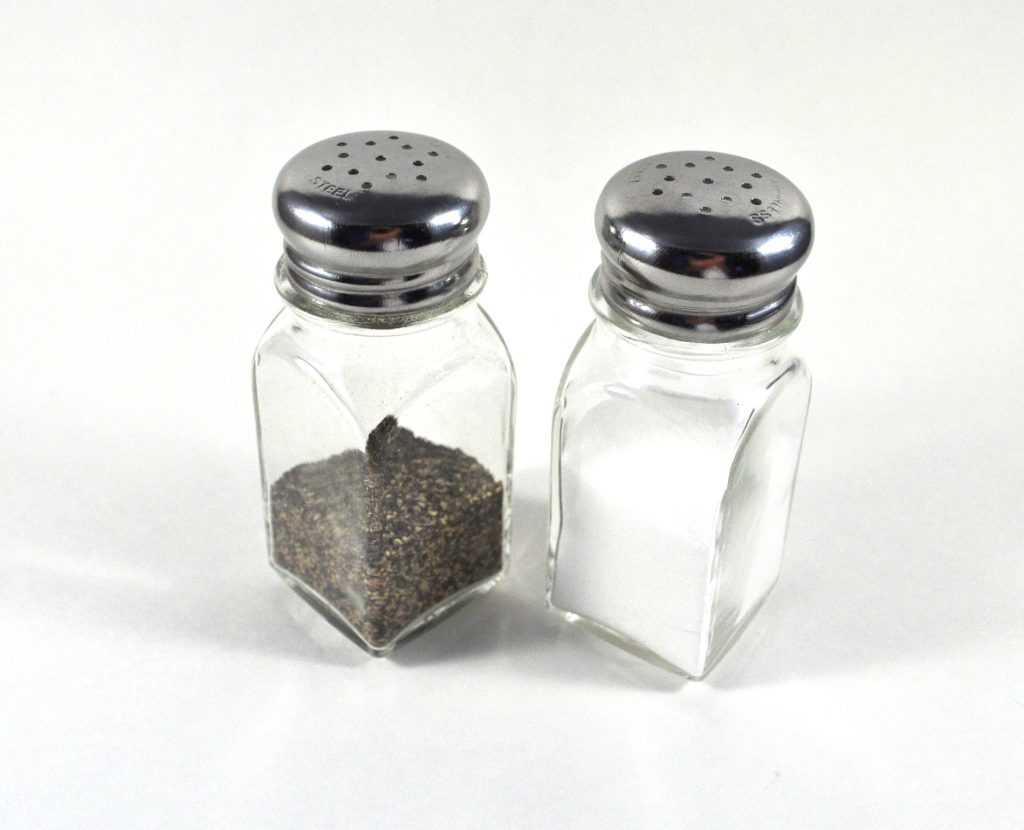The culinary world has hundreds of incredible food pairings. A few examples include tomato and basil, catsup and mustard, apples and cinnamon and chilies and lime.
When chefs and home cooks are seasoning their next meal, they have a go-to essential spice pairing that’s widely available in a lot of kitchens. This pairing is salt and pepper.
Why People Pair Salt with Pepper: A Look at the Spice Duo’s History

Over time, these two ingredients have become indispensable spices in the kitchen, as well as in restaurants. Diners, for instance, would reach for the salt and pepper shakers to further elevate the taste of their meal. So, have you ever wondered why people do this?
The “love story” of salt and pepper goes way back to the 17th century. Before this yin and yang relationship existed, people often used salt in combination with sugar. This changed, however, with Louis XIV.
The famous French king and builder of Versailles was an extremely picky eater. He wanted his chefs to season his food lightly with just salt and pepper. This formed the basis for modern cooking.
The near-exclusive use of salt and pepper as seasoning and tableside condiment eventually spread throughout Europe and made its way to the Americas. These essential spices, however, are commonplace in Asia. Cooks in this part of the globe use alternative ingredients, such as oyster sauce, duck sauce, soy sauce and fish sauce, to deliver adequate sodium to the dish. This rendered salt and pepper unnecessary.
Tips When Using Salt and Pepper
When following the instruction “use salt and pepper to taste,” this does not mean using your salt and pepper shaker liberally and hope that your dish tastes great at the end. If you’re cooking up a nice dish for yourself or your family, you’ll need to use these two spices wisely.
Here are a few cooking suggestions on using these two spices:
Taste Your Dish Before Putting Any Kind of Seasoning
Before you put in your essential spices, taste your dish first. Some recipes already include salty ingredients, such as feta cheese and soy sauce. Adding salt to the recipe is an overkill.
Adding Seasoning is Easier Than Subtracting It
If you add too much salt to your dish, you’ll be spending a lot of time trying to balance the flavors again. So, start small. When you’re cooking a stew or a soup, for instance, consider adding half a teaspoon of salt and a quarter teaspoon of pepper. Then, add a bit more seasoning to improve the taste.
Health tip: when adding seasoning, keep an eye out on your sodium intake. Too much salt is bad for the body. If you’re on a diet, make sure that you don’t go overboard with the salt and pepper combo.
Consider the Type of Salt You’re Going to Use
Not all salt varieties are equal. Given this, you need to use the seasoning that will benefit your dish the most. Here are a few salt options you could choose from:
Table Salt
Regular table salt is good for cooking, as it features a gritty texture and a sharp taste.
Sea Salt
You produce this type of salt through the evaporation of seawater. Sea salt typically has a coarser texture and a complex flavor profile than ordinary table salt.
Himalayan Sea Salt
This visually pleasing, pink-colored seasoning has a subtle flavor. Himalayan sea salt is perfect for enhancing delicately flavored dishes or adding a pop of color to your dish.
Find Out Which Type of Pepper is Best to Use
Pepper, like salt, comes in varieties. Here are a few options to let you know which peppercorn you should consider grinding:
Black Peppercorn
The pungent flavor and aroma present in this spice are ideal for nearly any cooking method.
Green Peppercorn
This is an underripe black peppercorn. It features a tart flavor similar to brined capers. Green peppercorn is suitable for brightening sauces or complementing meat dishes.
White Peppercorn
You get this type of peppercorn when you soak black peppercorn. White peppercorns have a mild floral and fruity flavor. They’re commonly used in European and Asian cooking.
Salt and Pepper Dishes You Should Try

These two spices provide the much-needed oomph to a bland meal. You can enjoy these condiments to the fullest by ordering and tasting these salt and pepper dishes:
Salt and Pepper Chicken
This is a popular dish in many Chinese restaurants. What makes this food amazing is the symphony of tangy and fresh vegetables, chili, spring onions, salt and pepper.
Salt and Pepper Fish
Another protein you could pair with salt and pepper is fish. You can partner this dish with rice or a few boiled vegetables. You’ll enjoy both the succulent fish bites along with the perfect blend of flavors.
Salt and Pepper Tofu
Tofu is a flexible ingredient that can take on whatever texture and flavor you desire. Given its range of consistency and neutral taste, tofu can work with nearly all types of flavors. When you have salt and pepper tofu on your plate, you can pair it with lots of food varieties.
If you want to enjoy the real taste of tofu, you’ll only need a few seasoning ingredients, including salt, pepper and Sichuan peppercorn.
The pairing of salt and pepper seems like an accident. Thanks to the whim of a powerful French king, these two spices have become the yin and yang of the modern kitchen.

